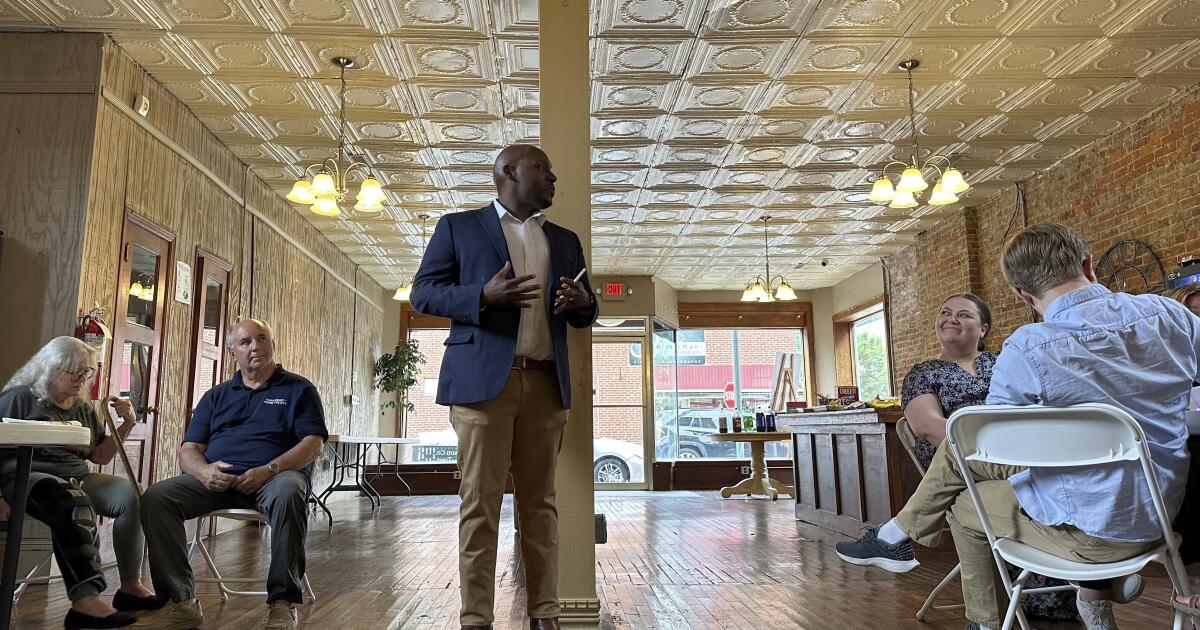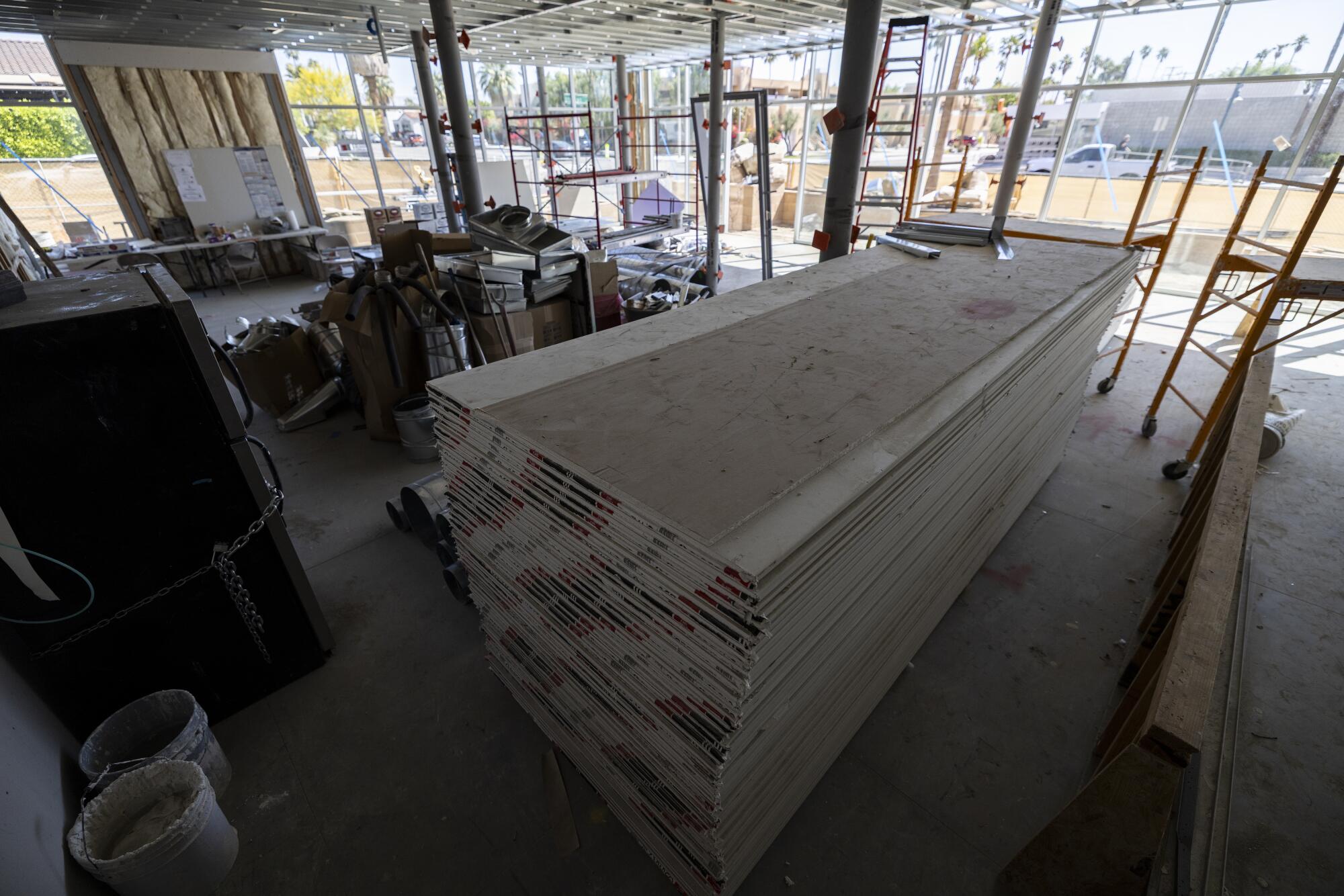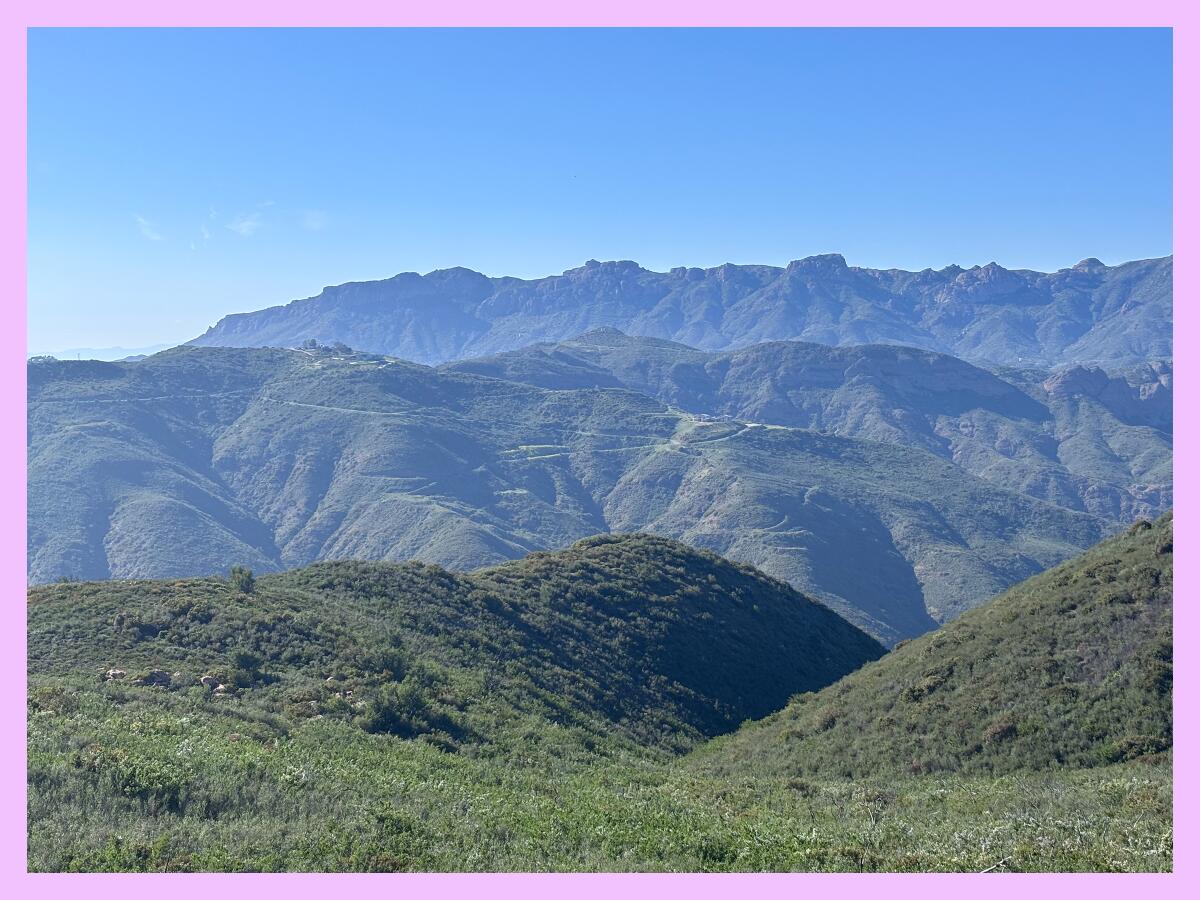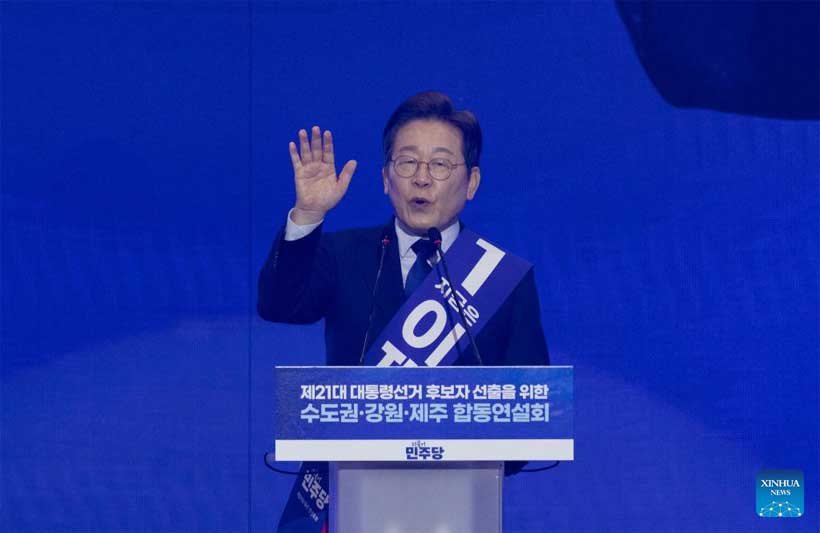PAINTSVILLE, Ky. — Janet Lynn Stumbo leaned on her cane and surveyed the two dozen or so voters who had convened in a small Appalachian town to meet with the chair of the Kentucky Democratic Party.
A former Kentucky Supreme Court justice, the 70-year-old Stumbo said the event was “the biggest Democratic gathering I have ever seen in Johnson County,” an enclave where Republican Donald Trump got 85% of the presidential vote in November.
Paintsville, the county seat, was the latest stop on the state party’s “Rural Listening Tour,” a periodic effort to visit overwhelmingly white, culturally conservative towns of the kind where Democrats once competed and Republicans now dominate nationally.
Democrats’ path back to power may start in places like Paintsville, one small meeting at a time, because it may be difficult for the party to regain control of Congress or the White House without faring better among rural and small-town voters across the country.
The party recently lost U.S. senators from states with significant rural populations: Montana, Ohio, Pennsylvania and West Virginia. Also, Democratic-led states are losing population to Sun Belt states led by Republicans, with some projections suggesting changes after the 2030 census could cost Democrats 12 electoral college votes.
“The gut check is we’d stopped having these conversations” in white rural America, said Colmon Elridge, the Kentucky Democratic chair. “Folks didn’t give up on the Democratic Party. We stopped doing the things that we knew we needed to do.”
It’s not that Democrats must carry most white rural precincts to win more elections. It’s more a matter of consistently chipping away at Republican margins in the way Trump narrowed Democrats’ usual advantages among Black and Latino men in 2024, and not unlike what Kentucky’s Democratic governor, Andy Beshear, did in two statewide victories.
Nationally, Trump won 60% of small-town and rural voters when he lost reelection in 2020 — and 63% in his 2024 victory, according to AP VoteCast data. That’s a far cry from a generation ago, when Democrat Bill Clinton won pluralities in Johnson County on his way to capturing Kentucky’s electoral votes in the 1992 and 1996 White House races.
“We have to be intentional about how we build something sustainable,” Elridge said. “It’s not like we haven’t won here before.”
Combating the ‘caricature’ of Democrats
For two hours in downtown Paintsville, Elridge listened as Stumbo and others took umbrage at conservatives’ policy agenda, expressed frustration over President Trump’s standing in eastern Kentucky and said they were determined to sell their neighbors an alternative. Many brought their personal experiences to bear.
The event was part town hall, part catharsis, part pep talk. In some ways, the complaints in Paintsville mirrored how Democrats nationally are angry, often for very different reasons.
Sandra Music, a retired teacher who called herself “a new Democrat,” converted because of Trump. She bemoaned conservatives’ success in advancing private school tuition voucher programs and said they were threatening a public education system “meant to ensure we educate everybody.”
Music criticized Republicans for making a “caricature” of Democrats. “They want to pull out keywords: ‘abortion,’ ‘transgender,’ ‘boys in girls’ sports’” and distract from the rest of the Republican agenda, she said.
Stumbo, the former justice, lamented what she called the rightward lurch of the state and federal courts. “We are going to suffer irreparable damage,” she said, “if we don’t stop these conservative idiots.”
Michael Halfhill, who works in healthcare information technology, was incredulous that the billionaire president has taken hold of voters in Appalachia, historically one of the country’s poorest regions.
“It’s not left versus right. It’s rich versus poor,” he said, shaking his head at working-class white voters — Johnson County is 97.5% white — “voting against themselves.”
Ned Pillersdorf, who is married to Stumbo, went after Republicans for their proposed federal tax and spending plans, especially potential cuts to Medicaid. He said Paintsville still has a rural hospital, which is among the largest employers in the region, in no small part because Kentucky is among the GOP-leaning states where a Democratic governor expanded Medicaid under the 2010 Affordable Care Act.
Elridge, the first Black chair of a major party in Kentucky, mentioned Trump’s attacks on diversity, equity and inclusion initiatives and related civil rights laws and regulations.
“This is where Trump and MAGA excel — if somebody who looks like me is your enemy, then you don’t care if the guy in the White House is peeing on your leg and telling you it’s rain,” he said, referring to Trump’s “Make American Great Again” movement.
Republican response
By definition, a “listening tour” is not meant to produce concrete action. Elridge and Nicholas Hazelett, the Johnson County Democratic chair who is a college student and a Paintsville City Council member, acknowledged that the small crowd was Democrat-friendly. Despite a few recent converts, no one was there waiting to be convinced.
Across the street, antiques shop owner Michelle Hackworth said she did not even know Democrats were holding a meeting. Calling herself a “hard-core Republican,” she smiled when asked if she would consider attending.
“They wouldn’t convince me of anything,” she said.
Bill Mike Runyon, a self-described conservative Republican who is Paintsville’s mayor and loves Trump, went immediately to social and cultural commentary when asked in an interview to explain Johnson County politics.
Democrats, he said, “have to get away from the far-left radical — look at the transgender message.” Further, Runyon said, “everything got kind of racial. It’s not like that here in Paintsville and in Johnson County, but I can see it as a country. … It’s making people more racist against one another.”
Asked specifically who he was talking about, he alluded to progressive U.S. Reps. Alexandria Ocasio-Cortez, a Latina from New York City, and Jasmine Crockett, a Black woman from Texas.
“It’s the ones you always see on TV,” the mayor said.
Governor’s bipartisan appeal
Beshear seems to be the one Democrat who commands wide respect in and around Paintsville.
Democrats hailed the 47-year-old governor for supporting abortion and LGBTQ+ rights while still attracting support beyond the Democratic strongholds of Louisville, Lexington and Frankfort. Beshear did not win Johnson County but got 37% of the vote in his 2023 reelection. He carried several nearby counties.
Many Republicans, including the mayor, complimented Beshear for his handling of floods and other disasters in the region.
“He’s been here,” Runyon said. “I absolutely can get to him if I need him.”
In 2024, Beshear landed on the list of potential vice presidential running mates for Democratic nominee Kamala Harris. He also remains Senate Democrats’ top pick for a 2026 campaign for the seat coming open with Republican Sen. Mitch McConnell’s retirement.
Beshear, whose father once lost to McConnell after having won two governor’s races, has said he will not run for Senate. But he has stepped up his cable TV interviews and launched his own podcast, fueling speculation that his next campaign will be for the 2028 presidential nomination.
“Andy is not like those national Democrats,” Runyon said. Harking back to the 1990s, he added, “Bill Clinton wasn’t like these Democrats today.”
Hackworth, the shop owner, noted that she voted against the younger Beshear twice. But over the course of an extended interview, she, too, commended the governor’s disaster management. She also questioned some moves by Trump, including the idea of getting Washington completely out of the disaster aid business.
She blamed Trump’s predecessor, former President Biden, for a “tough time at my store,” but acknowledged that federal aid had helped many businesses and households stay afloat through the COVID-19 pandemic emergency.
Hackworth said she was not familiar with details of Medicaid expansion, but she identified the nearby hospital as among the area’s largest employers. The others, she said, are the public school system and Walmart, which a day earlier had announced it was increasing prices because of Trump’s tariffs.
While supporting Trump’s “America first” agenda, Hackworth said widespread tariffs would upset many consumers. “You can walk through my store and see where the new stuff is made,” she said. “I try to buy American, but so much of it is China, China, China.”
Asked again whether any of that should give Democrats an opening in places like Paintsville, she said, “Well, there’s always an opening if you show up.”
Barrow writes for the Associated Press.


















